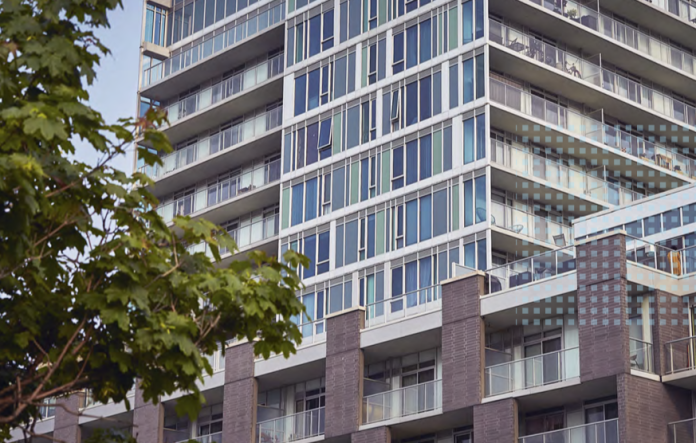Special to Ontario Construction Report
A day after approving a roadmap for construction of 65,000 affordable housing units by 2030 Toronto’s city council in November gave the go ahead for spending on “shovel-ready design” for a proposed streetcar line on the eastern waterfront. Both projects aim to accommodate population growth in the city and both hinge on billions of dollars of funding from the province and the federal government that has not yet been secured.
The council also voted to adopt a process for requests to the province for waiver of the public’s right to appeal to the Ontario Land Tribunal plans for infrastructure projects deemed necessary, a tool the city says it may use to expedite rental home construction.
Councillors voted 24 to 1 in favour of a plan that would see the city act as a “public builder,” leading the development of five initial sites throughout the downtown core. It envisions 25,000 new rent-controlled homes in addition to what was already planned, thereby increasing the total housing target to 65,000 homes. The total would include 6,500 rent-geared-to income, 41,000 affordable rental and 17,500 rent-controlled market homes.
“This roadmap will identify exact sites. Where are we going to be building? It would identify how we’re going to do it, when we’re going to do it, and who will be doing it,” Mayor Olivia Chow said before the start of the meeting.
City staff in a report said funding has been secured for 4,455 of the homes, with the cost to deliver the remaining 60,545 homes at between $28.6 billion and $31.5 billion — with undertakings needed from the province and Ottawa to each commit $500 million to $800 million a year for seven years.
The plan also requires $6.5 billion and $8 billion in low-cost financing/repayable loans to Toronto, the waiving of Provincial Sales Tax on all purpose-built rental housing projects and loan guarantees for non-profit and public led purpose-built affordable and market rental projects, as well as for affordable homeownership projects.
It requires that as part of any future federal land sales, at least 30 per cent of the gross floor area be allocated for affordable housing for 99 years. It allows for inclusionary zoning to be applied across the city and limits appeals of municipally initiated Official Plan and zoning bylaw amendments for purpose-built rental projects while also removing right of appeal for projects with at least 30 per cent affordable housing in which units are guaranteed affordable for at least 50 years.
Mayor Chow told the meeting that that she is in talks with senior levels of government to obtain funding commitments but Coun. Stephen Holyday, who voted against the plan, said financing rests on a “wing and a prayer.” He added that denying appeal rights sets a dangerous precedent and tabled a motion requiring quarterly reporting on the status of city building that was voted down.
But Coun. Holyday did see his amendment approved that requires at least 20 days’ public written notice before a Community Infrastructure and Housing Accelerator request is considered by a city committee. Introduced by the province amid a flurry of Planning Act amendments, the CIHA is akin to a Minister’s Zoning Order, a provincial mechanism that overrides local planning authority, although the onus is on the municipality to request its application.
Coun. Gord Perks said the city has added safeguards that allow for public notice of accelerator applications and require the city’s chief planner to attest that in the absence of appeals proper planning and due diligence has been carried out.
“I’m not terribly keen on taking away appeal rights,” Coun. Perks said. “But in some specific cases it may be necessary.”
City council, meanwhile, approved $63.6 million in funding to continue design and engineering on two sections of the Waterfront East LRT to 60 per cent design completion. The estimated cost of the 10-year project to provide transportation for neighborhoods on the revitalized Port Lands would total $2.67 billion, with costs rising by up to five per cent for each additional year of delay, city staff said. “We are already many years behind,” Mayor Chow said as the city negotiates funding deals with senior levels of government.
The proposed 3.8- kilometre line is to run south from Union Station on Bay Street to Queen’s Quay and then east along Lake Shore Boulevard to Villiers Island. The city projects that the light-rail line will provide over 50,000 daily trips and support 100,000 people it expects will live in the area when the work to redevelop the Port Lands is complete.
“Should construction not proceed, the $63.6 million of funding … would be sunk costs for the city, along with life to date expenditures of $36.1 million,” says a city report.
The report considers Toronto’s challenging financial position as it faces a $1.5 billion budget gap this year, recommending “an approach to advance the project while reducing immediate costs by phasing segments.” City staff also say streetcars rather the less costly option of electric buses are the best choice to handle future demands.

